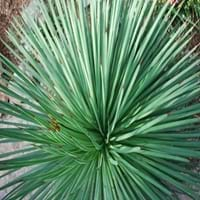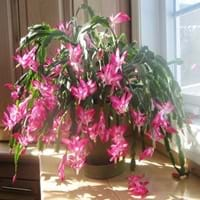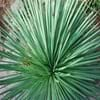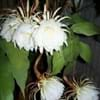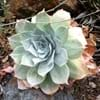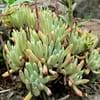Life Span
Perennial
Perennial
Type
Cactus or Succulent, Perennial
Cactus or Succulent
Origin
Southwestern United States, Mexico
North America, Latin America and the Caribbean, Central America, South America
Types
Not Available
Not Available
Habitat
Desert, Dry areas, Semi desert
Coastal Mountains, Humid climates
USDA Hardiness Zone
12-15
Not Available
Sunset Zone
10, 11, 12, 13, 14, 15, 16, 17, 18, 19, 20, 21, 22, 23, 24
Not Available
Habit
Rosette/Stemless
Clump-Forming
Flower Color
Yellow
Purple
Flower Color Modifier
Not Available
Not Available
Fruit Color
Non Fruiting Plant
Pink
Leaf Color in Spring
Green, Blue Green
Green, Dark Green
Leaf Color in Summer
Green, Blue Green
Green, Dark Green
Leaf Color in Fall
Green, Blue Green
Green, Dark Green
Leaf Color in Winter
Green, Blue Green
Green, Dark Green
Leaf Shape
Long Linear
Toothed
Plant Season
Spring, Summer, Fall, Winter
Spring, Summer, Fall, Winter
Sunlight
Full Sun
Partial Sun, Partial shade
Type of Soil
Loam, Sand
Loam, Sand
The pH of Soil
Neutral, Alkaline
Acidic, Neutral
Soil Drainage
Well drained
Well drained
Bloom Time
Spring
Not Available
Tolerances
Drought
Not Available
Where to Plant?
Container, Ground, Pot
Container, Ground, Pot
How to Plant?
Leaf Cutting, Stem Planting, Transplanting
Stem Planting, Transplanting
Plant Maintenance
Medium
Medium
Watering Requirements
Average Water Needs
Average Water Needs, Do Not over Water, Never Over-water
In Summer
Lots of watering
Lots of watering
In Spring
Moderate
Moderate
In Winter
Average Water
Average Water
Soil pH
Neutral, Alkaline
Acidic, Neutral
Soil Type
Loam, Sand
Loam, Sand
Soil Drainage Capacity
Well drained
Well drained
Sun Exposure
Full Sun
Partial Sun, Partial shade
Pruning
Remove damaged leaves, Remove dead branches, Remove dead leaves
Prune if you want to improve plant shape, Requires little pruning
Fertilizers
No fertilizers needed
All-Purpose Liquid Fertilizer
Pests and Diseases
Insects, Red blotch
Red blotch
Plant Tolerance
Drought
Drought
Flower Petal Number
Single
Not Available
Fragrant Bark/Stem
Not Available
No
Foliage Texture
Bold
Bold
Foliage Sheen
Matte
Glossy
Attracts
Not Available
Not Available
Allergy
Skin rash
Eye irritation, sneezing
Aesthetic Uses
Beautification, Landscape Designing, Showy Purposes
Beautification, Landscape Designing, Showy Purposes
Beauty Benefits
Not Available
Not Available
Environmental Uses
Air purification
Air purification
Medicinal Uses
Nutrients
Not Available
Part of Plant Used
Leaves
Leaves
Other Uses
Decoration Purposes, Showy Purposes, Used As Food
Decoration Purposes, Showy Purposes, Used as Christmas Tree, Used as Ornamental plant
Used As Indoor Plant
Yes
Yes
Used As Outdoor Plant
Yes
Yes
Garden Design
Container, Dried Flower, Everlasting, Feature Plant, Rock Garden, Wall, Wildflower
Container, Houseplant, Rock Garden, Wall
Botanical Name
DASYLIRION
SCHLUMBERGERA x buckleyi
Common Name
Spoon flower, Common sotol
Thanksgiving Cactus, Crab Cactus
In Hindi
डेजर्ट चम्मच
क्रिसमस कैक्टस
In German
Esslöffel
Weihnachtskaktus
In French
Desert cuillère
Cactus de Noël
In Spanish
Desierto cuchara
Cactus de Navidad
In Greek
Desert κουτάλι
Χριστούγεννα Cactus
In Portuguese
colher Desert
Cacto de Natal
In Polish
Desert łyżka
Christmas Cactus
In Latin
cochleari deserto
Nativitatis Cactus
Phylum
Magnoliophyta
Magnoliophyta
Class
Liliopsida
Magnoliopsida
Order
Asparagales
Caryophyllales
Family
Agavaceae
Cactaceae
Genus
Dasylirion
Schlumbergera
Clade
Angiosperms, Monocots
Angiosperms, Core eudicots, Eudicots
Tribe
Not Available
Not Available
Subfamily
Nolinoideae
Cactoideae
Number of Species
Not Available
Not Available
Importance of Desert Spoon and Christmas Cactus
Want to have the most appropriate plant for your garden? You might want to know the importance of Desert Spoon and Christmas Cactus. Basically, these two plants vary in many aspects. Compare Desert Spoon and Christmas Cactus as they differ in many characteristics such as their life, care, benefits, facts, etc. Every gardener must at least have the slightest clue about the plants he wants to plant in his garden. Compare their benefits, which differ in many ways like facts and uses. The medicinal use of Desert Spoon is Nutrients whereas of Christmas Cactus is Not Available. Desert Spoon has beauty benefits as follows: Not Available while Christmas Cactus has beauty benefits as follows: Not Available.
Compare Facts of Desert Spoon vs Christmas Cactus
How to choose the best garden plant for your garden depending upon its facts? Here garden plant comparison will help you to solve this query. Compare the facts of Desert Spoon vs Christmas Cactus and know which one to choose. As garden plants have benefits and other uses, allergy is also a major drawback of plants for some people. Allergic reactions of Desert Spoon are Skin rash whereas of Christmas Cactus have Eye irritation and sneezing respectively. Having a fruit bearing plant in your garden can be a plus point of your garden. Desert Spoon has no showy fruits and Christmas Cactus has no showy fruits. Also Desert Spoon is not flowering and Christmas Cactus is not flowering . You can compare Desert Spoon and Christmas Cactus facts and facts of other plants too.
